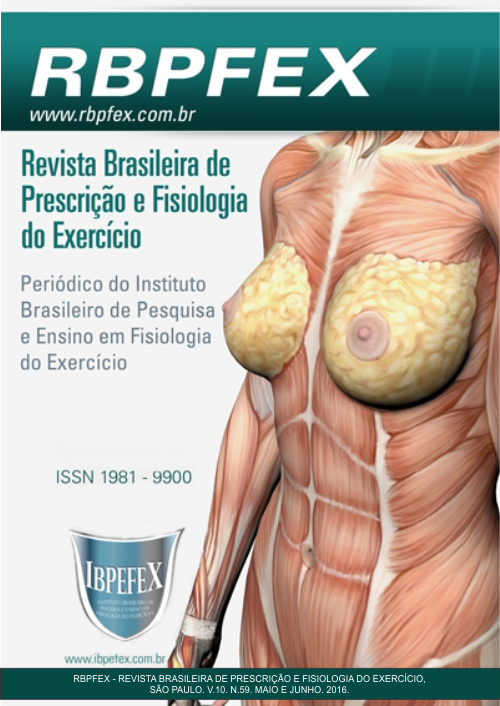Kinematic analysis of the front crawl in young triathletes from time program
Abstract
Because it is a sport performed in liquid medium, where the density is higher than in the air, swimming is very dependent on technical skill. Thus, biomechanical factors influence on performance than the actual production capacity and release of energy for displacement. The aim of the study was to perform a kinematic analysis of the front crawl in young triathletes Second Half program. The participants were seven males aged between 13 and 16 years belonging to the program Triathlon Project Second Half of the Ministry of Sport practitioners of the sport for at least a month. Considering the relationship between the performance in swimming and the kinematic variables (FBr, DBr, VN and IB), significant correlations found in this study were with the FBR and is an important component of NV and one of the indicators of the propulsive efficiency. A significant correlation between FBr and the VN was observed in the search results. The results showed that the strategy used by athletes through sharp rise in FBR may be related to a low muscular endurance, preventing the maintenance or increase of DBr. According to the findings of the study it can be concludedthat the triathletes have used up increasing the FBr, with decreased DBr to increase the turnover.
References
-Caputo, F.; Lucas, R.D.; Greco, C.C.; Denadai, B.S. Características da braçada em diferentes distâncias no estilo crawl e correlações com a performance. Revista Brasileira de Ciência e Movimento. Vol. 8. Num. 3. 2000. p. 7-13.
-Castro, F. Parâmetros biomecânicos do nado crawl apresentados por nadadores e triatletas. Dissertação de Mestrado. Escola de Educação Física-UFRGS. Rio Grande do Sul. 2002.
-Costa, J.M.P.; Kokubun, E. Lactato sanguíneo em provas combinadas e isoladas do triatlon: possíveis implicações para o desempenho. Revista Paulista de Educação Física. São Paulo. Vol. 9. Num. 2. 1995. p. 125-130.
-Craig, J.R.A.B.; Skehan, P.L.; Pawelczyk, J.A.; Boomer, W.L. Velocity, stroke rate, and distance per stroke during elite swimming competition. Medicine Science Sports Exercise. 1985. p. 625-634.
-Diprampero, P.E. Energetics of swimming in men. Journal of Applied Physiology. 1974. p. 1-5.
-Hay, J.G.; Guimarães, A.C.S. A quantitative look at swimming biomechanics. Swin. Tech. 1983. p. 11-17.
-International of Triathlon Union (ITU). Homepage oficial do órgão máximo do triathlon. França. 2011. Acesso em 15/07/2015. Disponível em: <http://www.triathlon.org>.
-Liberali, R. Metodologia Científica Prática: um saber fazer competente da saúde à educação. Florianópolis. 2008.
-Miller, D.I. Biomechanics of swimming. Exercise and Sports Sciences Review. 1975. p. 219-248.
-Toussaint, H.M.; Beek, P.J. Biomechanics of competitive front crawl swimming. Sports Medicine. Auckland. Vol. 13. 1992. p. 8-24.
-Yanai, T. Stroke frequency in front crawl: its mechanical link to the fluid forces required in non-propulsive directions. Journal of Biomechanics.New York. Vol. 36. 2003. p. 53-62.
Authors who publish in this journal agree to the following terms:
- Authors retain the copyright and grant the journal the right of first publication, with work simultaneously licensed under the Creative Commons Attribution License BY-NC which allows the sharing of the work with acknowledgment of the authorship of the work and initial publication in this journal.
- Authors are authorized to enter into additional contracts separately for non-exclusive distribution of the version of the work published in this journal (eg, publishing in institutional repository or book chapter), with acknowledgment of authorship and initial publication in this journal.
- Authors are allowed and encouraged to post and distribute their work online (eg, in institutional repositories or on their personal page) at any point before or during the editorial process, as this can bring about productive change as well as increase impact and impact. citation of published work (See The Effect of Free Access).






